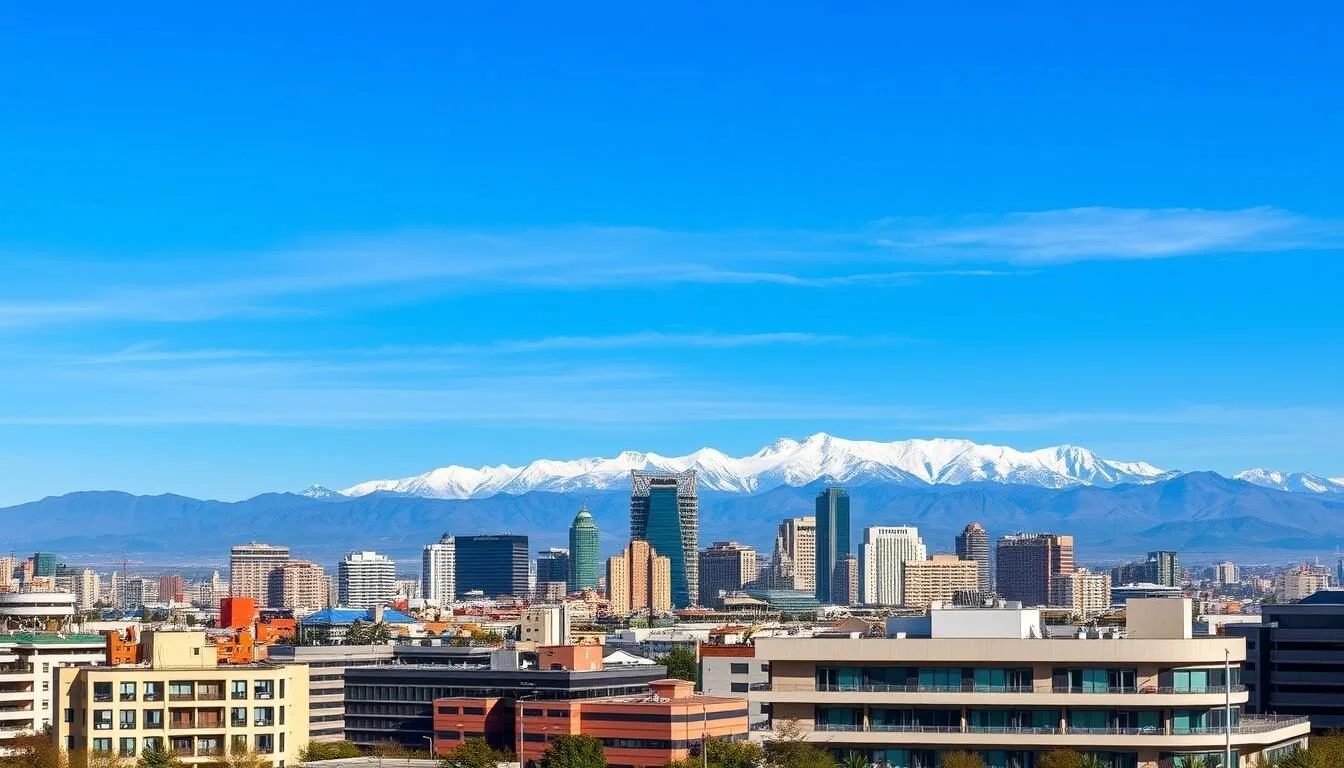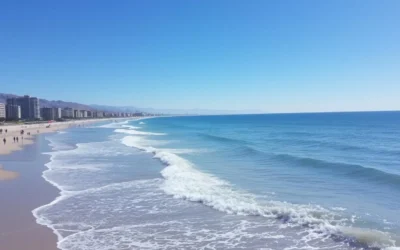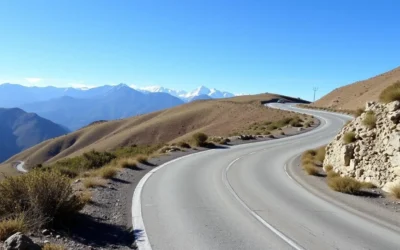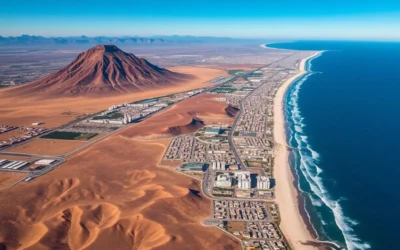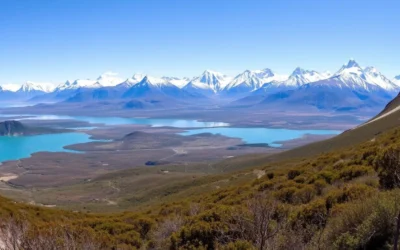Santiago, Chile stands as one of South America’s most underrated capitals, where you can ski in the Andes mountains in the morning and sip award-winning wine in the Casablanca Valley by sunset—all in the same day. Nestled between snow-capped peaks and just an hour from the Pacific coast, this vibrant metropolis offers an intriguing blend of colonial architecture, modern skyscrapers, and bohemian neighborhoods that surprise most first-time visitors.
Getting There & Planning Your Journey
Most international travelers arrive at Santiago’s Arturo Merino Benítez International Airport (SCL), which serves as the main gateway to Chile. The airport is located about 15 kilometers (9 miles) northwest of downtown Santiago.
From the airport, you have several transportation options to reach the city center:
- Airport buses (Centropuerto and TurBus) run every 10-20 minutes and cost around 1,900 CLP (approximately $2 USD).
- The official airport shuttle service, Transvip, offers shared vans for about 7,000 CLP ($8 USD) per person.
- Taxis are readily available but more expensive, costing around 20,000 CLP ($22 USD) to the city center.
- Ride-sharing services like Uber and Cabify operate in Santiago and often offer better rates than traditional taxis.
For a smooth arrival experience, consider booking your airport transfer in advance, especially if you’re arriving late at night or during peak tourist season.
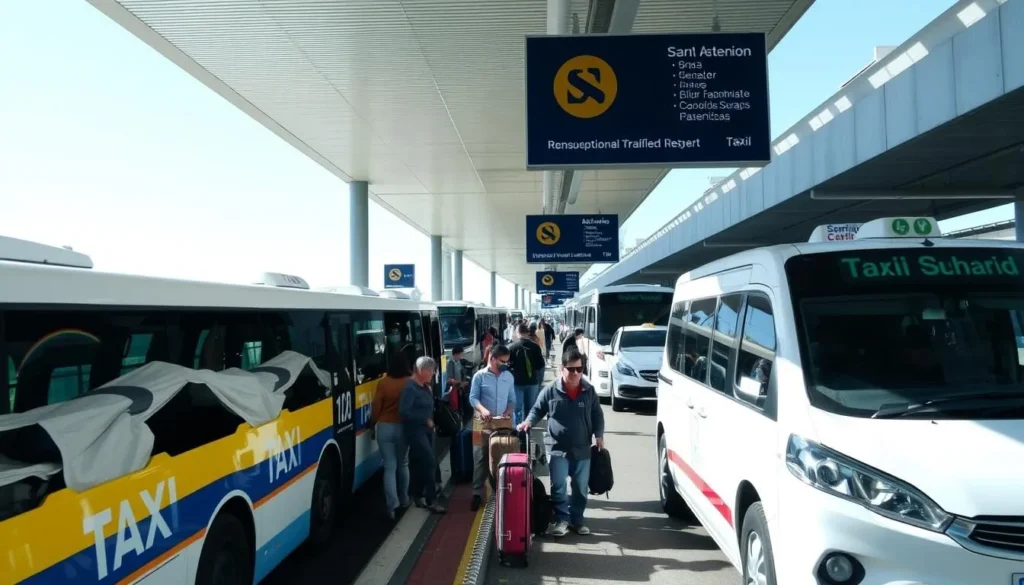
Best Time to Visit & Weather Tips
Santiago enjoys a Mediterranean climate with four distinct seasons. The best time to visit depends on your preferred activities and comfort level:
| Season | Months | Temperature | Conditions | Best For |
| Spring | September-November | 15-25°C (59-77°F) | Mild, occasional rain | City exploration, parks, gardens |
| Summer | December-February | 25-35°C (77-95°F) | Hot, dry, smoggy | Swimming pools, evening activities |
| Fall | March-May | 12-25°C (54-77°F) | Mild, cooling down | Wine tours, hiking, photography |
| Winter | June-August | 3-15°C (37-59°F) | Cool, rainy, snow in mountains | Skiing, hot springs, museums |
Spring (September to November) and fall (March to May) offer the most pleasant weather for exploring Santiago. Summer (December to February) can be quite hot, with temperatures sometimes exceeding 35°C (95°F), and air quality issues are more common. Winter (June to August) brings cooler temperatures and occasional rain, but it’s the perfect time for skiing in nearby resorts.
Pro Tip: If you visit during winter months (June-August), you can combine city exploration with skiing in Valle Nevado, El Colorado, or Portillo—all within 1-2 hours from Santiago.
Getting Around Locally
Santiago has an excellent public transportation system that makes navigating the city relatively easy for visitors. The Metro (subway) is clean, efficient, and connects most major attractions. You’ll need a bip! card, which costs about 1,550 CLP ($1.70 USD) and can be purchased at any Metro station.
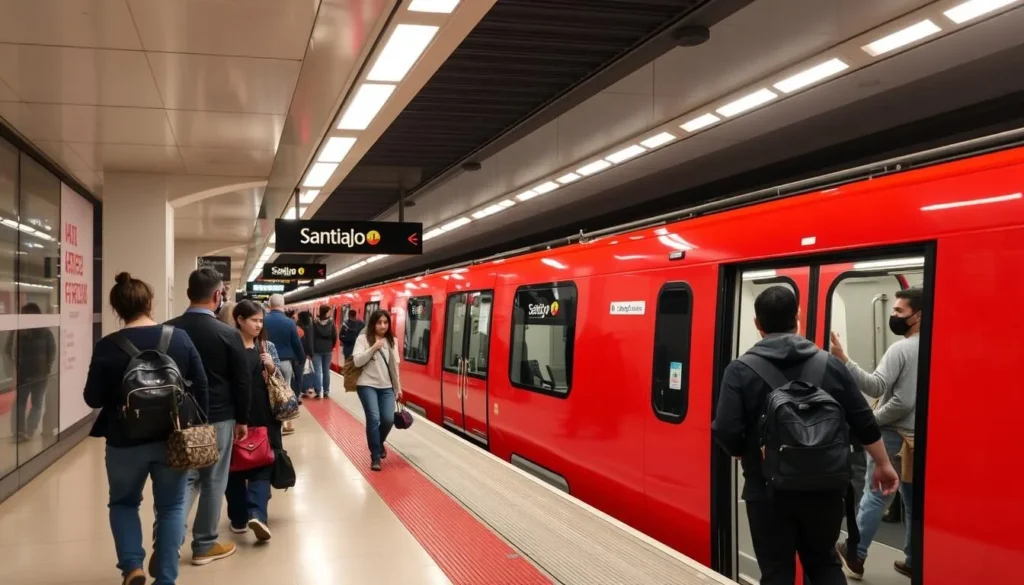
Here are your main transportation options:
- Metro: The fastest way to get around, with seven lines covering most of the city. Fares range from 640-800 CLP ($0.70-0.90 USD) depending on the time of day.
- Buses: Complement the Metro system and reach areas not covered by the subway. Your bip! card works on buses too.
- Taxis: Yellow taxis are abundant and relatively affordable. Always ensure the meter is running.
- Ride-sharing: Uber and Cabify are widely used and often more convenient than traditional taxis.
- Walking: Many of Santiago’s central attractions are within walking distance of each other, especially in neighborhoods like Lastarria, Bellavista, and downtown.
Explore Santiago at your own pace
For maximum flexibility, especially for day trips to wine regions or coastal towns, consider renting a car.
Safety Note: While Santiago is generally safe for tourists, exercise caution in crowded areas and on public transportation. Avoid displaying valuable items and be extra vigilant in the downtown area, especially around Plaza de Armas, particularly after dark.
Where to Stay
Santiago offers a wide range of accommodation options, from luxury hotels to budget-friendly hostels. The best neighborhood to stay in depends on your interests, budget, and safety preferences.
Providencia
A safe, upscale residential area with excellent restaurants, parks, and shopping. Well-connected by public transportation and within walking distance to attractions like Cerro San Cristóbal.
Best for: First-time visitors, families, mid-range travelers
Las Condes
Santiago’s modern business district with luxury hotels, high-end shopping malls, and international restaurants. Very safe but farther from historic attractions.
Best for: Business travelers, luxury seekers, longer stays
Lastarria
A charming, bohemian neighborhood with colonial architecture, art galleries, and trendy cafés. Central location near museums and Cerro Santa Lucía.
Best for: Culture enthusiasts, couples, boutique hotel lovers
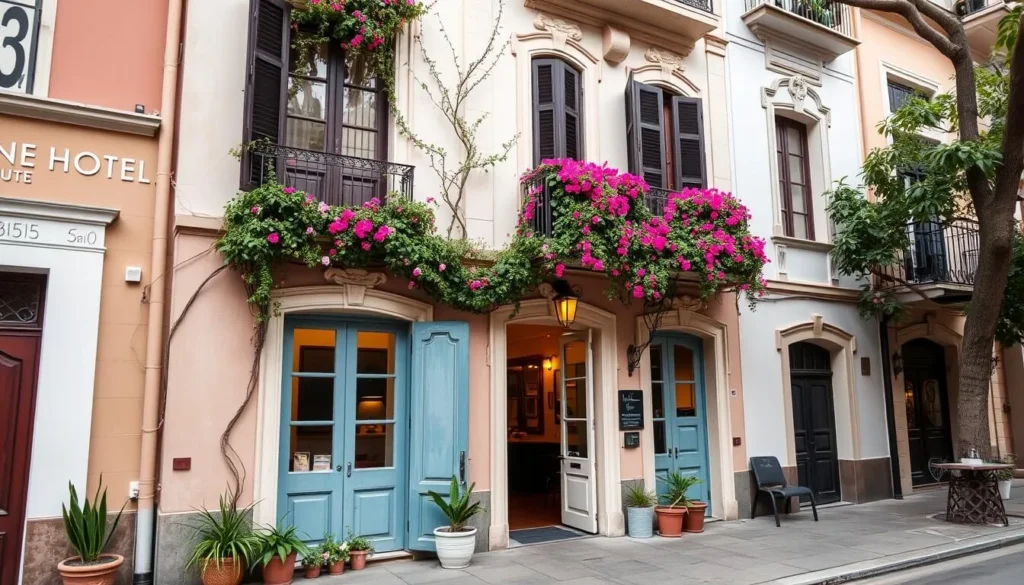
Find your perfect stay in Santiago
From luxury hotels to cozy boutique properties, book your accommodation now.
Local Insight: Avoid staying in the immediate area around Plaza de Armas (the historic center) at night. While it’s fascinating to visit during the day, this area has become less safe after dark in recent years.
Dining & Local Cuisine
Chilean cuisine blends indigenous traditions with European influences, creating a unique culinary landscape. Santiago’s food scene has evolved dramatically in recent years, with everything from traditional markets to world-class restaurants.
Must-Try Chilean Dishes
- Empanadas de Pino: Savory pastries filled with ground beef, onions, olives, hard-boiled eggs, and raisins.
- Pastel de Choclo: A corn and meat casserole similar to shepherd’s pie but with a sweet corn topping.
- Completo: Chile’s answer to the hot dog, loaded with avocado, mayonnaise, tomato, and sauerkraut.
- Chorrillana: A mountain of french fries topped with sautéed beef, caramelized onions, and fried eggs.
- Cazuela: A hearty stew with meat, corn, pumpkin, potatoes, and other vegetables.
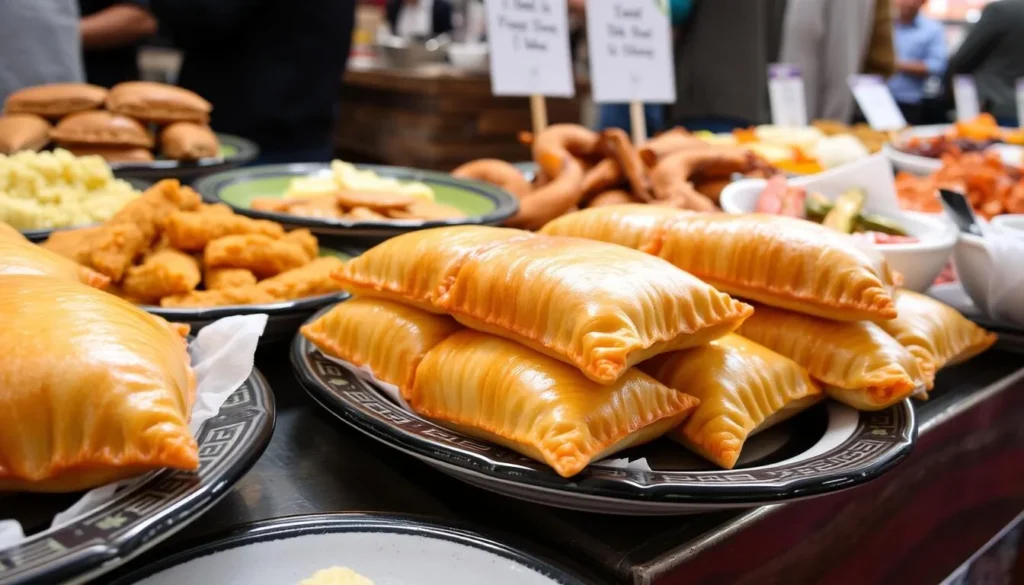
Where to Eat in Santiago
Mercado Central
Santiago’s historic central market is the perfect place to sample fresh seafood. While somewhat touristy, it offers an authentic glimpse into Chilean culinary traditions.
Tip: Visit before noon to avoid crowds and get the freshest seafood.
Barrio Lastarria
This neighborhood is packed with trendy restaurants, cafés, and wine bars. Try Bocanariz for an extensive Chilean wine selection or Chipe Libre for pisco cocktails.
Tip: Many restaurants offer excellent lunch specials (menú del día).
Barrio Italia
A hip area with charming cafés and restaurants housed in renovated colonial buildings. Perfect for brunch or afternoon coffee and pastries.
Tip: Explore the side streets for hidden culinary gems.
Wine Lovers: Chile is famous for its excellent wines, particularly Cabernet Sauvignon, Carmenere, and Sauvignon Blanc. Most restaurants offer extensive Chilean wine lists at prices much lower than you’d find abroad.
Attractions, Sightseeing & Santiago Chile Things to Do
Santiago offers a diverse range of attractions, from historic sites to natural wonders. Here are the must-visit places during your stay:
Cerro San Cristóbal
Rising 300 meters above the city, Cerro San Cristóbal offers the most spectacular panoramic views of Santiago and the surrounding Andes mountains. You can reach the summit via funicular, cable car, or a challenging hike. At the top, you’ll find the iconic 22-meter statue of the Virgin Mary, a small chapel, and several terraces with breathtaking vistas.
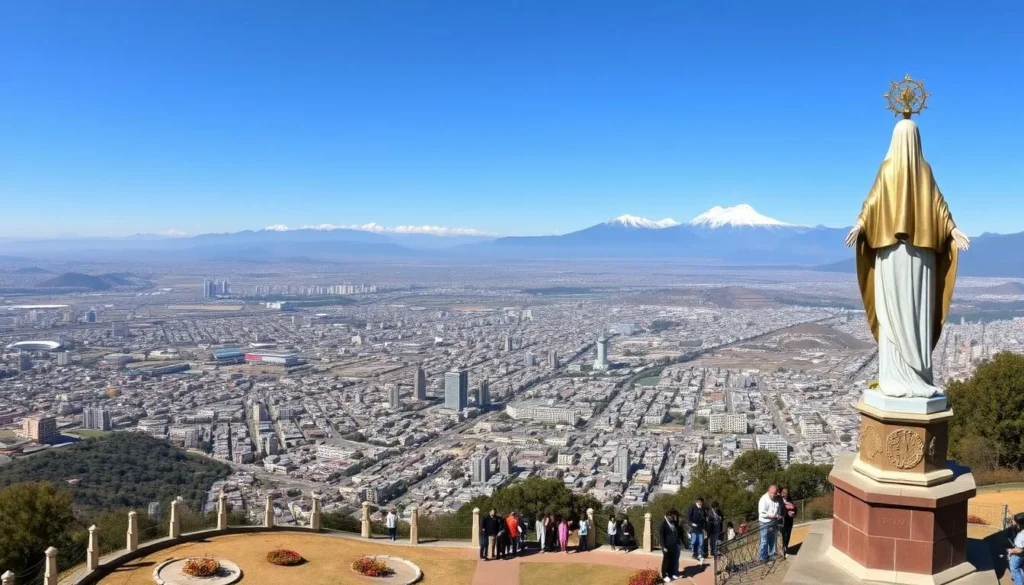
Experience the best of Santiago
Join a guided tour to discover Santiago’s highlights with expert local knowledge.
Plaza de Armas
The historic heart of Santiago, Plaza de Armas is surrounded by important buildings including the Metropolitan Cathedral, Central Post Office, and National History Museum. Street performers, artists, and local chess players create a lively atmosphere. Visit during the day and be sure to step inside the cathedral to admire its ornate interior.
La Moneda Palace
The seat of the Chilean president and a symbol of the country’s political history. This neoclassical building offers free guided tours (reservation required) and houses the Centro Cultural Palacio La Moneda in its basement, featuring rotating art exhibitions. Don’t miss the changing of the guard ceremony, which takes place on odd-numbered days at 10 am (11 am on weekends and holidays).
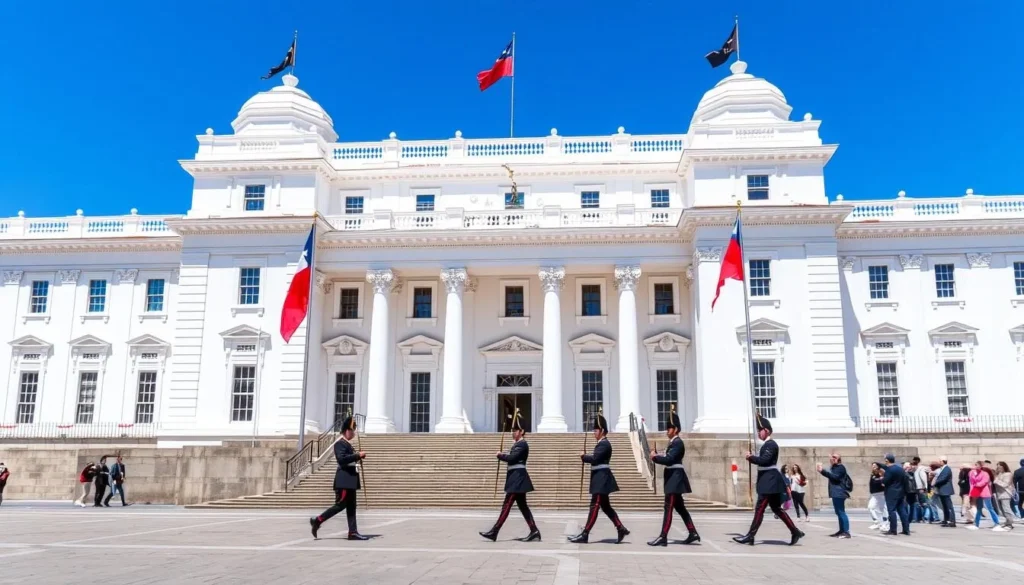
Cerro Santa Lucía
A smaller hill in the center of Santiago with beautiful terraces, fountains, and staircases. This former volcanic rock is where Pedro de Valdivia founded the city in 1541. Climb to the top for lovely views of downtown Santiago, especially at sunset.
Sky Costanera
For the ultimate city view, visit the observation deck at Sky Costanera, Latin America’s tallest building. Located on the 61st and 62nd floors, it offers 360-degree views of Santiago and the surrounding mountains. The experience is particularly magical at sunset when the city lights begin to twinkle against the darkening sky.
Museums, Cultural Spots & Festivals
Santiago boasts a rich cultural scene with world-class museums, vibrant arts districts, and colorful festivals that celebrate Chilean heritage.
Top Museums
Museum of Memory and Human Rights
A powerful museum dedicated to commemorating the victims of human rights violations during Chile’s military dictatorship (1973-1990). The exhibits are moving and informative, offering important context for understanding modern Chile.
Chilean Museum of Pre-Columbian Art
Houses an impressive collection of artifacts from indigenous cultures throughout Latin America. The beautifully curated exhibits include textiles, ceramics, and sculptures dating back thousands of years.
National Museum of Fine Arts
Located in a stunning Beaux-Arts building in Parque Forestal, this museum showcases Chilean and international art from the colonial period to the present day. The building itself is worth a visit.
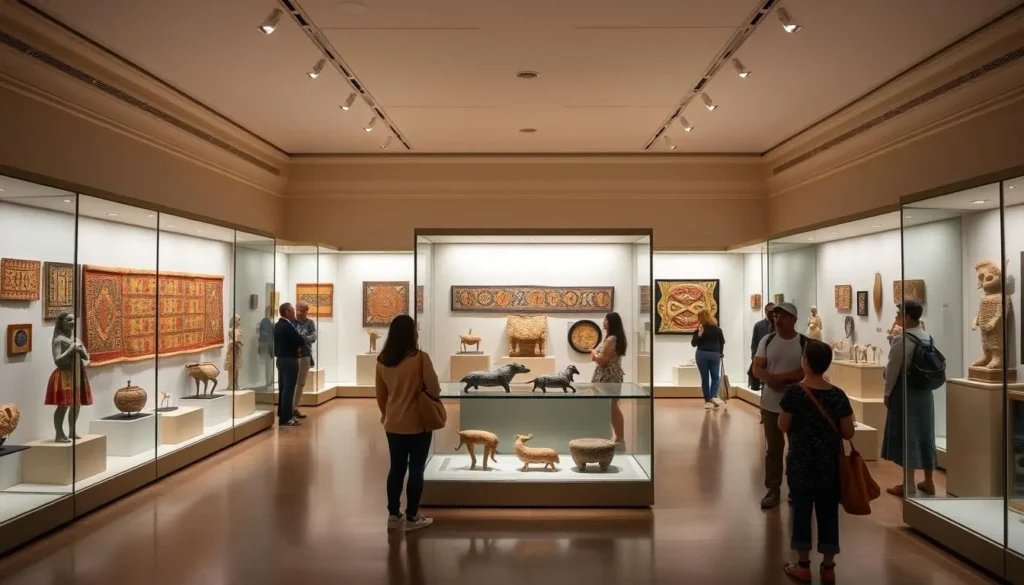
Cultural Neighborhoods
Santiago’s diverse neighborhoods each offer a unique cultural experience:
- Barrio Bellavista: Santiago’s bohemian quarter, filled with colorful street art, trendy restaurants, and vibrant nightlife. Visit La Chascona, former home of Nobel Prize-winning poet Pablo Neruda.
- Barrio Lastarria: A historic neighborhood with colonial architecture, art galleries, street performers, and artisanal markets. Perfect for an afternoon stroll.
- Barrio Italia: A hip district known for its antique shops, design stores, and cozy cafés housed in renovated workshops and factories.
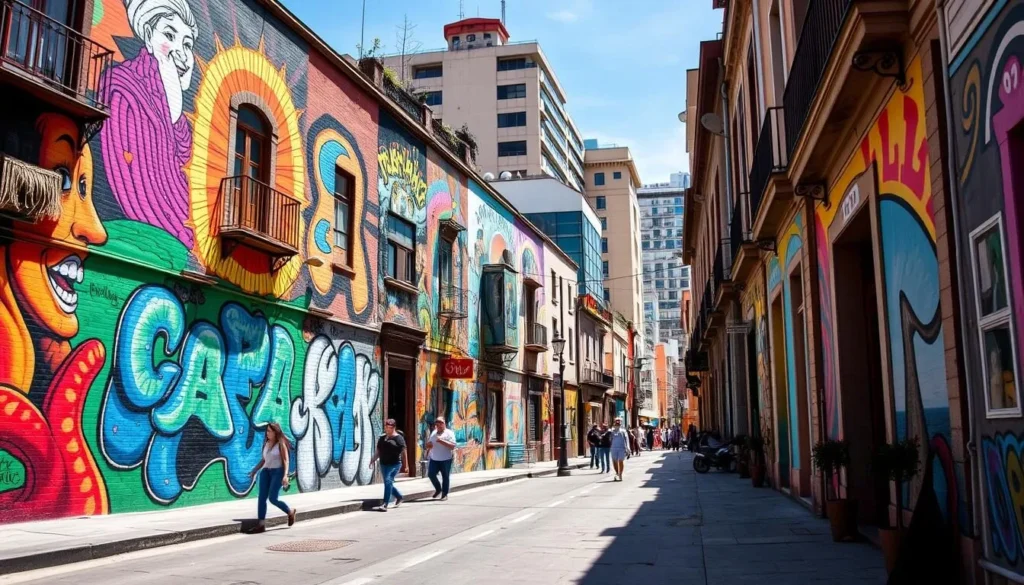
Major Festivals
If your visit coincides with these events, don’t miss the opportunity to experience Chilean culture at its most vibrant:
- Fiestas Patrias (September 18-19): Chile’s independence celebration featuring parades, traditional dances, rodeos, and abundant food and drink.
- Santiago a Mil (January): An international theater festival with performances in venues throughout the city, including free outdoor shows.
- Vendimia (March-April): Wine harvest festivals in the surrounding valleys, with grape stomping, folk music, and plenty of wine tasting.
Discover Santiago’s cultural treasures
Book a guided cultural tour to gain deeper insights into Chile’s rich heritage.
Sports, Nature & Outdoor Experiences
Santiago’s location between the Andes mountains and the Pacific coast makes it an ideal base for outdoor adventures. From skiing to wine tasting, there’s something for every nature lover.
Day Trips from Santiago
Cajón del Maipo
A stunning mountain gorge just 25 miles southeast of Santiago. Explore dramatic landscapes, hot springs, and the turquoise waters of Embalse El Yeso reservoir. Perfect for hiking, rafting, or simply enjoying the mountain scenery.
Valparaíso & Viña del Mar
Visit these contrasting coastal cities—colorful, bohemian Valparaíso with its hillside neighborhoods and street art, and elegant Viña del Mar with its beaches and gardens. Just 1.5 hours from Santiago.
Wine Valleys
Explore Chile’s renowned wine regions: Maipo Valley (known for Cabernet Sauvignon), Casablanca Valley (famous for white wines), and Colchagua Valley (home to full-bodied reds). Most wineries offer tours and tastings.
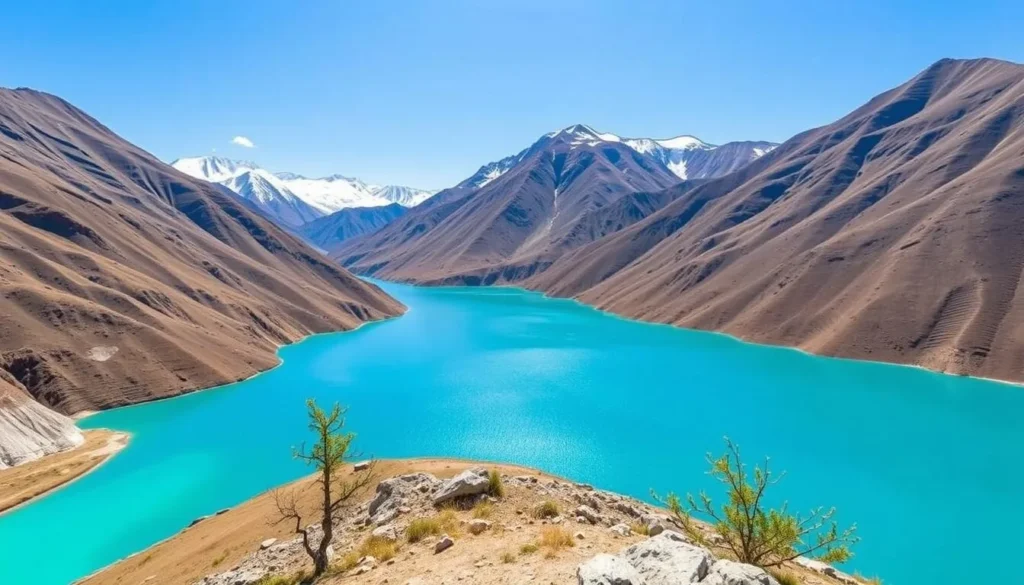
Skiing and Snow Sports
During the Southern Hemisphere winter (June to September), Santiago offers easy access to world-class ski resorts:
- Valle Nevado: The largest ski resort in Chile, located just 35 miles from Santiago. Offers 7,000 acres of skiable terrain and stunning Andean views.
- El Colorado: A family-friendly resort with terrain suitable for all skill levels, located near Valle Nevado.
- Portillo: One of South America’s oldest and most famous ski resorts, known for its challenging terrain and iconic yellow hotel. Located about 2 hours from Santiago.
Adventure Tip: Many tour operators offer day trips to the ski resorts that include transportation, equipment rental, and lift tickets—perfect if you want to experience the Andes snow without dedicating your entire vacation to skiing.
Urban Parks and Recreation
Santiago itself offers plenty of green spaces for outdoor activities:
- Parque Metropolitano: Beyond Cerro San Cristóbal, this massive urban park includes hiking and biking trails, swimming pools, a botanical garden, and a zoo.
- Parque Bicentenario: A modern park in Vitacura with lakes, walking paths, and excellent views of the Andes. Popular for picnics and family outings.
- Parque Araucano: Located in Las Condes, this park offers sports facilities, a Japanese garden, and open spaces for relaxation.

Safety, Etiquette & Local Customs
Santiago is generally safe for tourists, but like any major city, it’s important to stay aware of your surroundings and take basic precautions.
Safety Tips
- Be vigilant in crowded areas, especially around Plaza de Armas and on public transportation, where pickpocketing can occur.
- Avoid walking alone at night, particularly in downtown Santiago, Estación Central, and parts of Recoleta and Independencia.
- Use official taxis or ride-sharing apps rather than hailing cabs on the street, especially at night.
- Keep valuables secure and avoid displaying expensive cameras, jewelry, or electronics.
- Make copies of important documents and leave originals in your hotel safe when possible.
Local Etiquette
Chileans are generally formal and polite. Here are some cultural norms to keep in mind:
- Greet people with a handshake or a kiss on the right cheek (between women or between a man and woman).
- Use formal titles (Señor, Señora) until invited to use first names.
- Punctuality is appreciated but not strictly observed in social settings—arriving 15-30 minutes late to a dinner party is common.
- Tipping 10% is standard in restaurants (check if service is already included).
- Basic Spanish phrases are appreciated, though many people in tourist areas speak some English.
Important: Santiago occasionally experiences protests, particularly around Plaza Italia/Baquedano. While most are peaceful, they can sometimes turn disruptive. Stay informed about current events and avoid demonstration areas.
Practical Travel Tips
These practical tips will help you navigate Santiago like a local:
Money Matters
- The local currency is the Chilean Peso (CLP). ATMs are widely available, and credit cards are accepted in most establishments.
- Notify your bank of your travel plans to avoid card blocks.
- Keep some cash on hand for small purchases, taxis, and markets.
- Tipping is expected (10% in restaurants, small amounts for hotel staff and tour guides).
Communication
- Purchase a local SIM card for affordable data and calls (Entel, Movistar, and Claro are major providers).
- Free Wi-Fi is available in most hotels, cafés, and shopping malls.
- Learn basic Spanish phrases—while many people in tourist areas speak some English, knowing a few local expressions goes a long way.

Health & Weather Preparation
- Santiago’s elevation (570 meters/1,870 feet) isn’t high enough to cause altitude sickness for most people.
- The sun can be intense, especially in summer—wear sunscreen, sunglasses, and a hat.
- Tap water is generally safe to drink in Santiago, but bottled water is widely available if preferred.
- Air quality can be poor in winter (May-August) due to thermal inversion—those with respiratory issues should check pollution levels.
- Bring layers, as temperature differences between morning, afternoon, and evening can be significant.
Local Insight: “La once” is a Chilean tradition similar to British afternoon tea—a light meal with bread, avocado, cheese, and sweet pastries, typically enjoyed between 5-7 pm. Many cafés offer special once menus.
Ready for your Santiago adventure?
Book your flights, accommodation, and activities now to experience the best of Chile’s capital!
Final Thoughts on Santiago
Santiago may not have the immediate allure of Rio de Janeiro or the colonial charm of Cartagena, but it rewards those who take the time to explore its diverse neighborhoods, sample its cuisine, and use it as a base for incredible day trips. From the snow-capped Andes to world-class wineries, from bohemian art districts to sophisticated shopping areas, Santiago offers a perfect introduction to Chile’s remarkable diversity.
Whether you’re spending just a few days in the capital before heading to Patagonia or the Atacama Desert, or making it your primary destination, Santiago’s blend of history, culture, and natural beauty will leave you with lasting memories of this South American gem. Pack your sense of adventure—Santiago’s vibrant culture and breathtaking landscapes are waiting to surprise you!
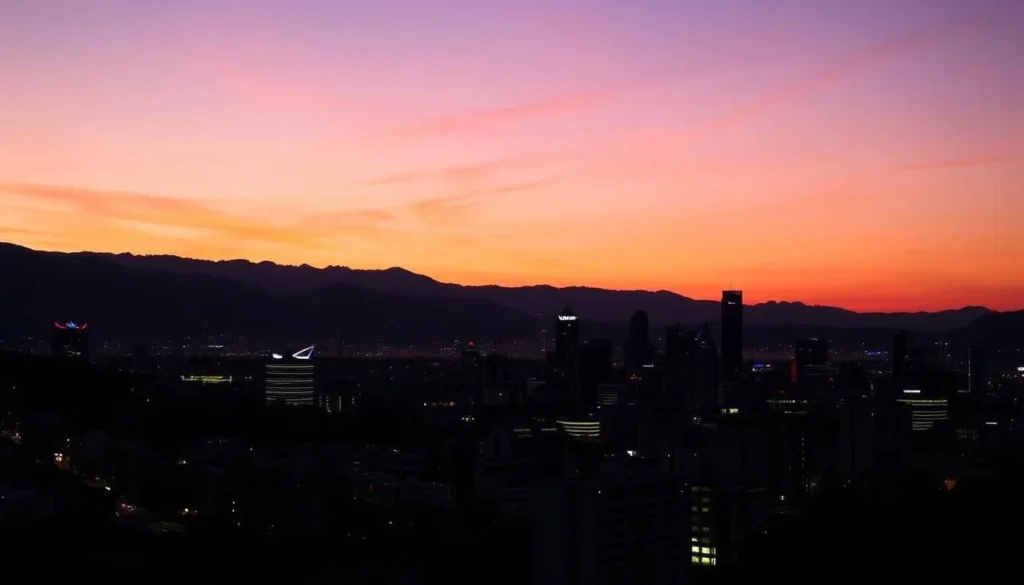
The above is subject to change.
Check back often to TRAVEL.COM for the latest travel tips and deals.
